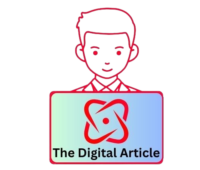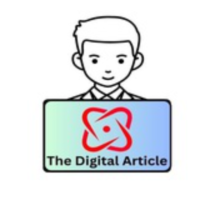Technology has become an integral part of our daily lives, and its impact on education is undeniable. In the modern era, where information is readily accessible at our fingertips, traditional methods of teaching and learning are evolving to embrace technological advancements. From interactive whiteboards to online learning platforms, technology is revolutionizing the way students engage with educational content. This article explores the role of technology in modern education, its benefits, challenges, and the future implications for both students and educators.
Benefits of Technology in Education
- Enhanced Learning Experience: Technology enables personalized and interactive learning experiences tailored to individual student needs. With access to multimedia resources, students can engage with content in various formats, making learning more engaging and effective.
- Accessibility: Technology has made education more accessible to students regardless of their geographical location or physical abilities. Online courses and virtual classrooms eliminate barriers to education, allowing students to learn at their own pace and convenience.
- Collaborative Learning: Digital tools facilitate collaboration among students and educators, breaking down the walls of traditional classrooms. Platforms such as Google Classroom and Microsoft Teams enable seamless communication and collaboration, fostering teamwork and peer-to-peer learning.
- Real-World Applications: Technology bridges the gap between theoretical knowledge and real-world applications. Simulation software, virtual labs, and educational apps provide students with hands-on experience in various subjects, preparing them for future careers in STEM fields and beyond.
- Adaptive Learning: Artificial intelligence and machine learning algorithms power adaptive learning platforms that analyze student performance and tailor learning pathways accordingly. This personalized approach maximizes learning outcomes by addressing individual strengths and weaknesses.
Challenges and Considerations
- Digital Divide: Despite the widespread adoption of technology in education, the digital divide remains a significant challenge. Socioeconomic disparities in access to devices and high-speed internet can exacerbate educational inequalities, leaving some students at a disadvantage.
- Distraction and Overreliance: While technology offers countless opportunities for learning, it also poses risks such as distraction and overreliance. Students may become distracted by non-educational content or develop dependency on technology for learning, potentially hindering critical thinking and problem-solving skills.
- Data Privacy and Security: The integration of technology in education raises concerns about data privacy and security. Educational institutions must prioritize safeguarding sensitive student information and comply with regulations such as the Family Educational Rights and Privacy Act (FERPA) to ensure the confidentiality of student data.
- Tech Literacy Gap: Not all students and educators possess the necessary digital literacy skills to effectively leverage technology for learning. Bridging the tech literacy gap requires ongoing training and professional development initiatives to equip stakeholders with the skills needed to navigate digital tools and resources.
- Equitable Access to Resources: Ensuring equitable access to technology and digital resources is essential for addressing educational disparities. Educational institutions and policymakers must invest in infrastructure and initiatives to provide all students with access to essential technology tools and internet connectivity.
Conclusion
Technology has become an indispensable tool in modern education, offering numerous benefits such as enhanced learning experiences, accessibility, collaborative learning, real-world applications, and adaptive learning. However, it also presents challenges such as the digital divide, distraction, data privacy concerns, tech literacy gap, and equitable access to resources. Addressing these challenges requires a collaborative effort from educators, policymakers, and stakeholders to harness the full potential of technology in education while mitigating its drawbacks.
FAQs
How does technology enhance learning experiences?
Technology offers personalized and interactive learning experiences through multimedia resources, adaptive learning platforms, and real-world applications, catering to individual student needs and preferences.
What are the challenges associated with technology in education?
Challenges include the digital divide, distraction, data privacy concerns, tech literacy gap, and equitable access to resources, which require proactive measures to mitigate their impact on educational outcomes.
How can educators address the digital divide?
Educators can address the digital divide by advocating for equitable access to technology resources, providing support and training for students and families, and collaborating with policymakers to implement initiatives that bridge the gap.
What measures can educational institutions take to ensure data privacy and security?
Educational institutions can implement robust data privacy policies, educate stakeholders about data security best practices, and leverage secure technologies and encryption methods to safeguard sensitive student information.
How can technology be effectively integrated into the curriculum?
Effective integration of technology into the curriculum requires careful planning, ongoing training for educators, alignment with learning objectives, and continuous evaluation of its impact on student outcomes.


